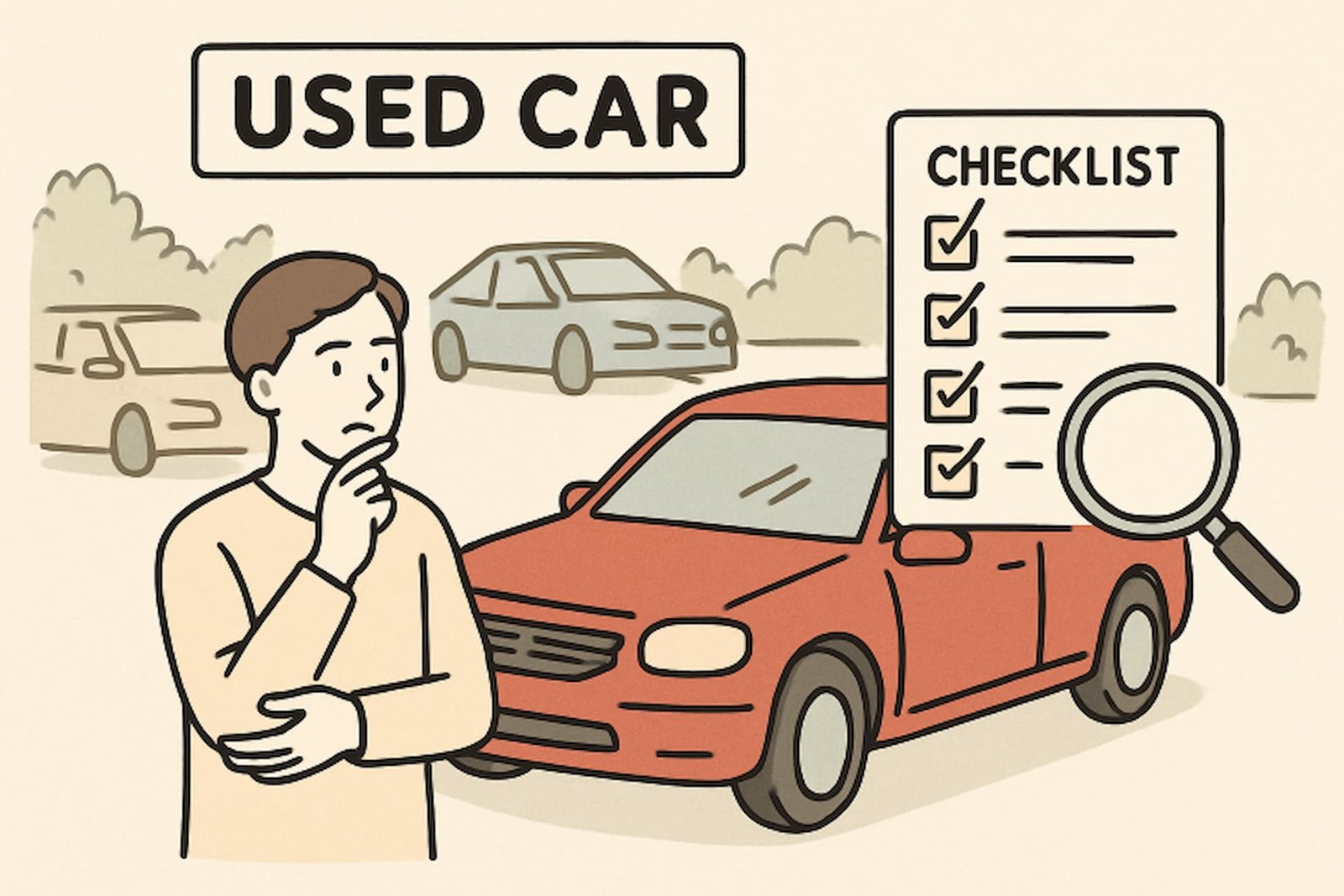Introduction
Buying a used car is one of the most pragmatic choices a consumer can make, offering an affordable pathway to vehicle ownership without absorbing the steep depreciation hit new cars experience. The pre-owned market, however, is vast and sometimes daunting, with a dizzying number of models, sellers, and varying degrees of vehicle condition. Navigating these options successfully requires a strategic approach and solid information at every step. For prospective buyers in Sarasota or similar markets, browsing local inventories, such as used car Sarasota, helps you not only gauge current pricing but also observe the range of choices available nearby. By leveraging trustworthy online listings and conducting thorough research, you can dramatically reduce the risk of making an expensive mistake while enhancing your chances of finding the perfect used vehicle for your needs.
Approaching the used car marketplace without proper preparation can lead to disappointment or unforeseen costs in the future. To ensure the best outcome, a blend of diligent groundwork, in-depth examination of a vehicle’s background, shrewd timing, awareness of financing methods, and strong negotiation skills is necessary. Whether you’re interested in the additional peace of mind offered by a respected dealership or are seeking deals with private sellers, following key buying strategies leads to greater confidence, a smoother purchase process, and long-term satisfaction with your vehicle investment.
Research and Preparation
The starting point for any used car purchase is careful self-assessment: clarify what you need in a vehicle, how much you can truly spend, and which features matter most for your driving habits. If you have a long daily commute, prioritize fuel efficiency and comfort; for growing families, focus on space and safety. Modern cars come with a dizzying array of options—automatic emergency braking, lane departure warning, smartphone integration, and more—so make a list of which features are essential versus simply nice to have.
Utilizing online resources can significantly simplify the early part of your search. Reputable sites like Kelley Blue Book, Edmunds, and Consumer Reports offer detailed vehicle histories, reliability ratings, and total ownership costs, helping you narrow your options to the most dependable models within your budget. Reading owner reviews and real-world testimonials can provide invaluable insights into how vehicles perform over time and identify common issues. To get a realistic idea of local price trends and availability, use inventory tools such as those found for dealerships in Sarasota, FL and compare similar listings in your city or region.
Setting Your Budget
A well-defined budget is the backbone of a smart purchasing experience. Factor in the vehicle’s price, as well as associated expenses such as sales tax, registration, state fees, insurance, and fuel costs. Don’t forget that used cars can occasionally require out-of-pocket repairs or preventive maintenance beyond the first few months of ownership. Hence, experts suggest setting aside an additional 10-15% as a reserve fund for unexpected fixes. This cushion is especially valuable if you’re eyeing vehicles that are more than five years old or have higher mileage. Staying disciplined with your budget from the outset helps you avoid “sticker shock” and ensures your car purchase remains a financial asset rather than a liability.
Vehicle History and Inspection
Delving into a car’s background is not just advisable—it’s essential. Every used car has a story, and uncovering that story can reveal critical clues about its overall value and hidden risks. Vehicle history reports from providers like Carfax or AutoCheck give a comprehensive overview, including accident records, mileage verification, previous owners, service intervals, and any title complications such as salvage or flood branding. If the seller is reluctant to provide a report or if there are numerous red flags—such as the vehicle changing hands many times within a short period, signs of past accidents, or evidence of odometer tampering—proceed with caution.
The Importance of a Professional Inspection
No matter how spotless a car appears on the surface, only a detailed inspection by a qualified mechanic can uncover less obvious mechanical or structural issues. Scheduling an independent inspection may cost a bit upfront, but can save you significant expense and heartache down the road. Mechanics can spot everything from uneven tire wear and rust to engine leaks, transmission concerns, or worn suspension parts—many of which may not present immediate symptoms but can lead to major repairs later. When buying from private sellers, this is particularly crucial since there may be no warranty or recourse after the purchase. In the case of dealership purchases, reliable dealers often allow or even encourage outside inspections, supporting their claim of selling quality pre-owned vehicles.

Timing Your Purchase
Choosing when to buy a used car can meaningfully affect how much you pay. Dealerships are driven by monthly and annual sales goals, which create motivation for sales staff to offer steeper discounts as quotas approach. The end of the month, the last days of a fiscal quarter, and most notably, December, are periods when buyers can often uncover the lowest prices, as dealerships aim to clear old inventory and meet performance targets. Additionally, shopping during less busy times—such as weekday mornings or even on days with poor weather—means you’ll get more attention from sales representatives and stand a better chance at negotiating a favorable deal with less competition from other buyers.
However, being strategic doesn’t mean you should wait endlessly. When the perfect match surfaces at the right price, being prepared to act quickly is just as important as timing the market. Well-priced used vehicles, especially those with clean histories and strong maintenance records, are in high demand and may sell within days. Have your research, financing, and inspection arrangements in place ahead of time so you can move decisively when the opportunity arises.
Financing Options
Financing a used car need not be a complicated process, but it does require you to weigh all your options rather than simply accepting a dealership’s first offer. Begin by securing pre-approval through your personal bank, credit union, or trusted online lenders. This gives you a clear understanding of the interest rates, total loan amounts, and monthly payments you are eligible for—even before you start negotiating on a specific car. With this knowledge in hand, you place yourself in a stronger position; dealerships may try to compete by matching or beating the rate or by offering better terms or incentives, especially for certified pre-owned cars.
As you compare financial products, pay close attention to the details: interest rates, loan duration, down payment requirements, and any additional administrative or prepayment fees. A shorter loan term often means higher monthly payments but results in lower overall interest paid. Beware of extras during the financing conversation—while some warranty extensions or maintenance plans offer value, others are unnecessary upsells that inflate your costs. Stay focused on products that genuinely enhance your vehicle’s reliability or help protect its resale value, and politely decline non-essential add-ons that don’t match your needs.
Negotiation Tactics
This is the stage where all your careful preparation and market research converge. When you’re ready to make an offer, use your data: present recent comparable sales, highlight your independent financing approval, and reference your inspection’s findings to justify your price if repairs are needed or if minor flaws exist. Remember, both dealerships and private sellers typically expect negotiation, so don’t hesitate to start below the listed asking price while remaining constructive and respectful.
Knowing When to Walk Away
The ability to walk away from the table is a powerful asset in any negotiation. Never feel pressured to accept a deal that doesn’t reflect fair market value, meet your standards, or fall outside your preset budget. Keeping a few backup vehicles in your search ensures you approach each negotiation from a position of strength, not desperation. The used car market is large and ever-changing—another well-maintained, suitable vehicle will almost always surface if you’re patient and persistent, so stick to your strategy until you secure terms you’re truly comfortable with.
Conclusion
Entering the used car market with a plan, sound knowledge, and a willingness to ask questions gives you the upper hand in what can be an intimidating process. By conducting thorough research, insisting on vehicle transparency, securing favorable financing, and negotiating confidently, you can avoid common pitfalls that ensnare unprepared buyers. Commit to a well-structured approach and utilize trusted local resources, such as used car dealers, to ensure you’re always equipped with the latest information. In doing so, you’ll not only save money upfront but also enjoy lasting peace of mind and satisfaction behind the wheel of a dependable used car for years to come.





